Abstract
Interest in operant research on stimulus control has declined at the same time that much interest has burgeoned in nonoperant areas. Several examples of this shift toward traditional learning theory are considered, all of which have sponsored theoretical approaches that attempt to characterize the underlying associative units. These theoretical approaches are defended on the grounds that they have generated a deeper understanding of a variety of often puzzling phenomena. My projection is that future research will be determined even more strongly by theories about the structure of associations. Particular issues for which such discussion will have major impact include (1) whether conditional stimulus control is qualitatively different than simpler forms of stimulus control, (2) whether stimulus control is organized hierarchically, and (3) the origin of categories of stimulus equivalence.
Full text
PDF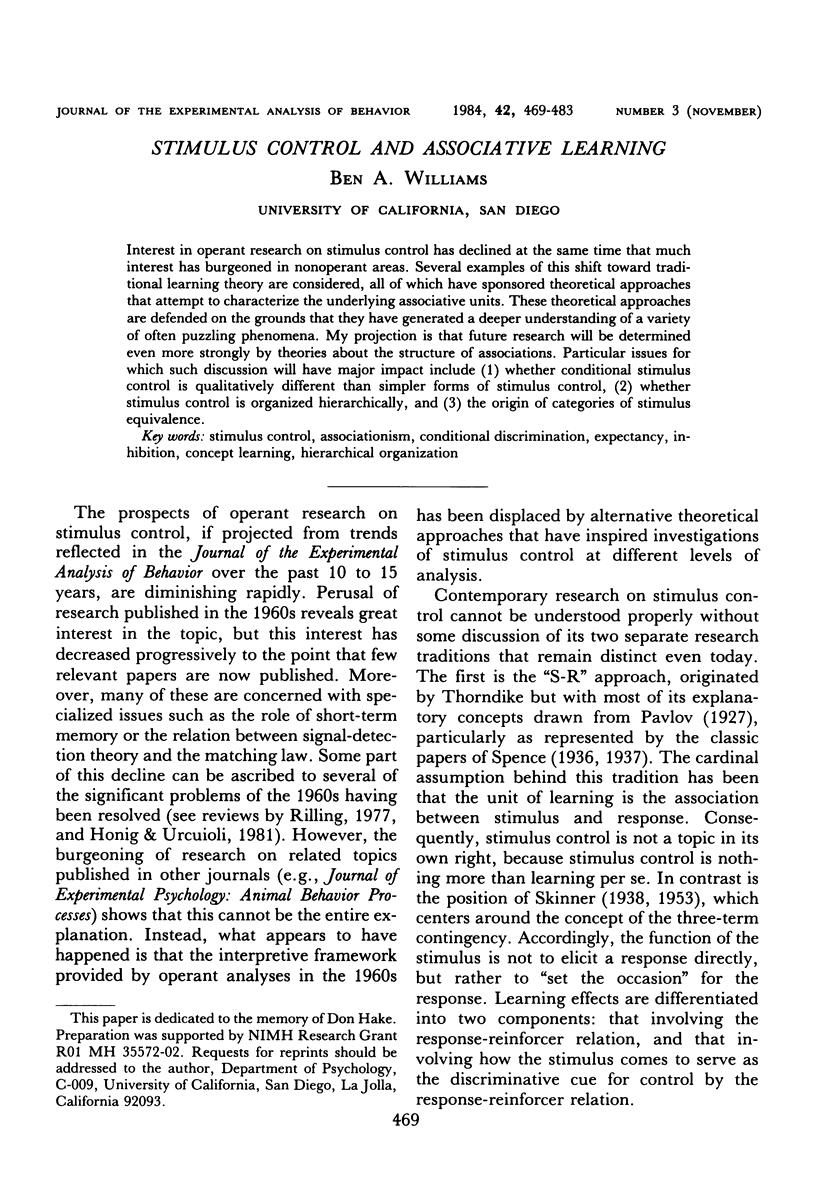

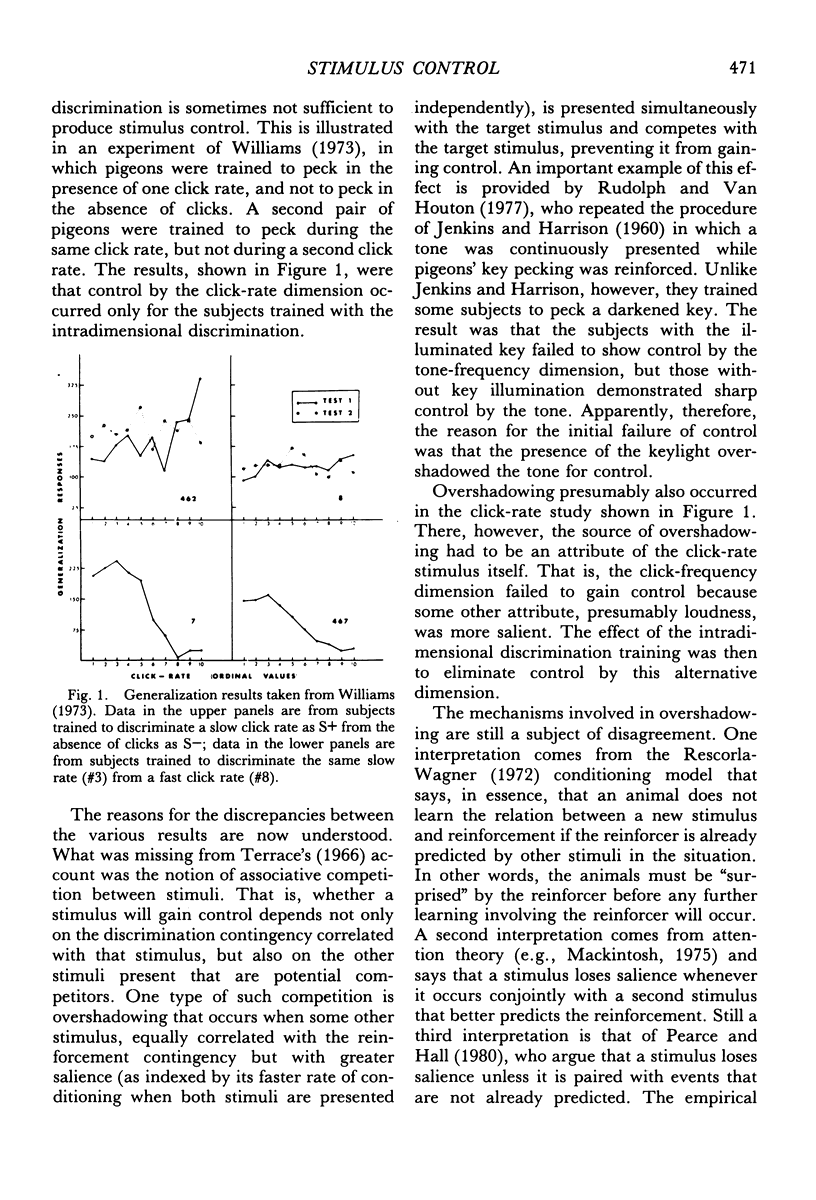
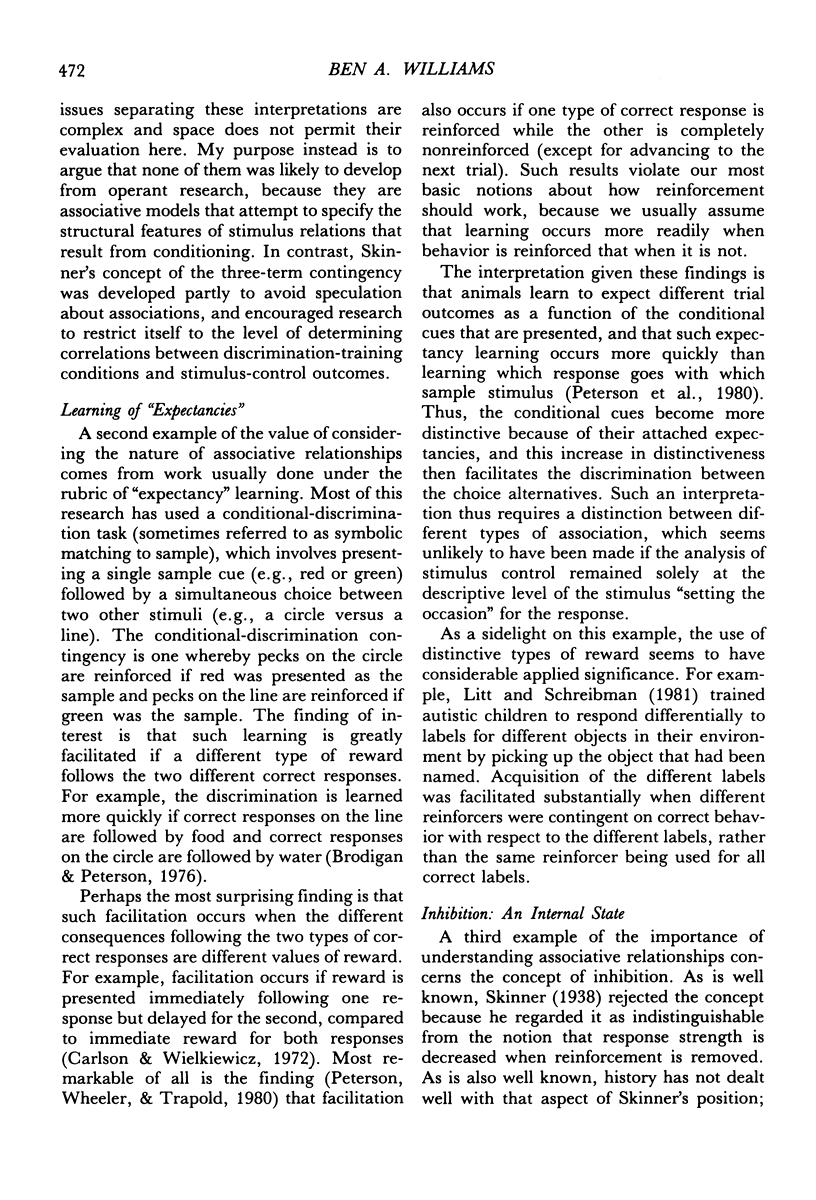
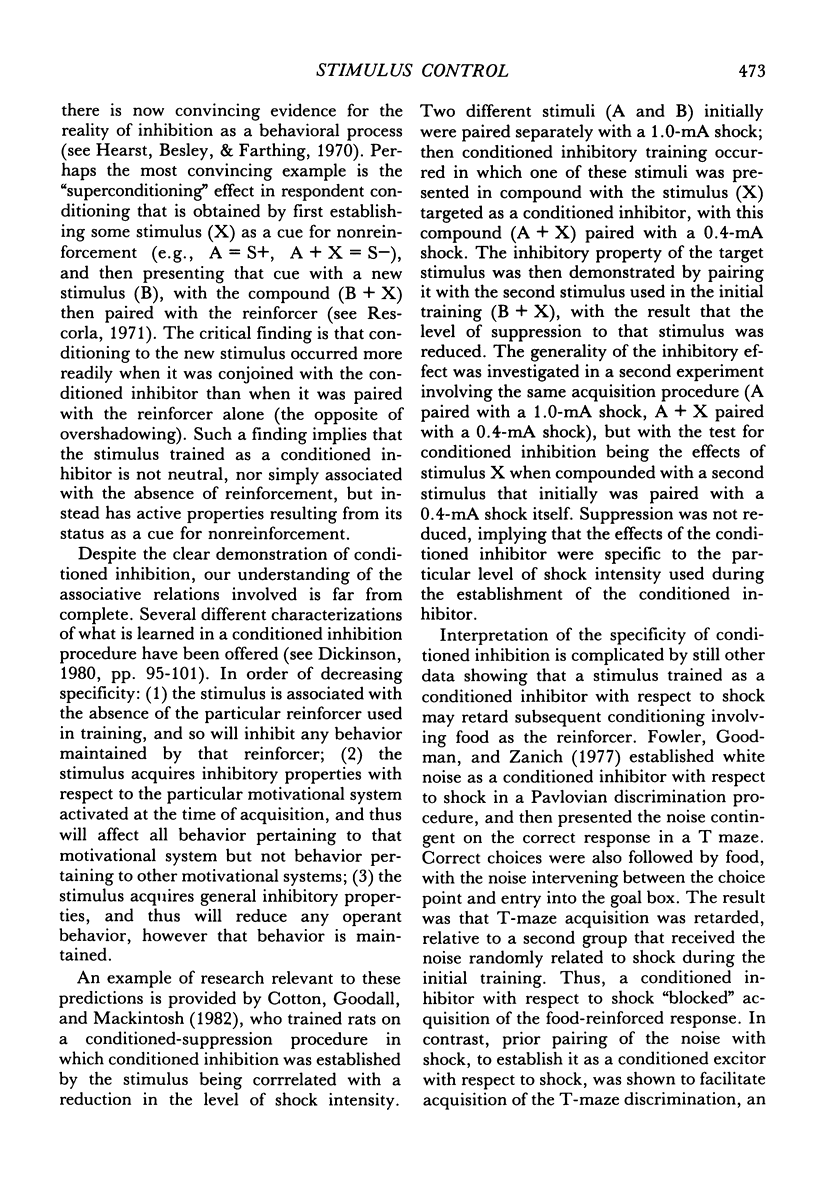
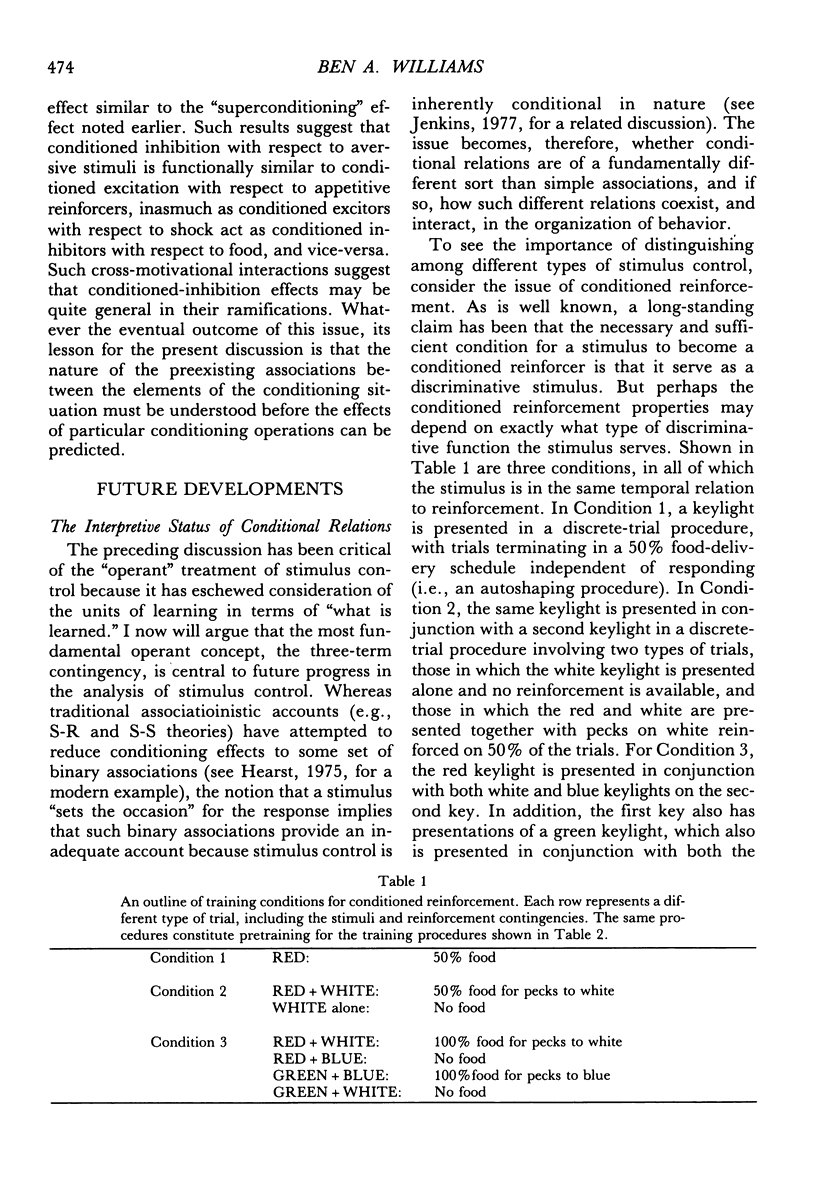
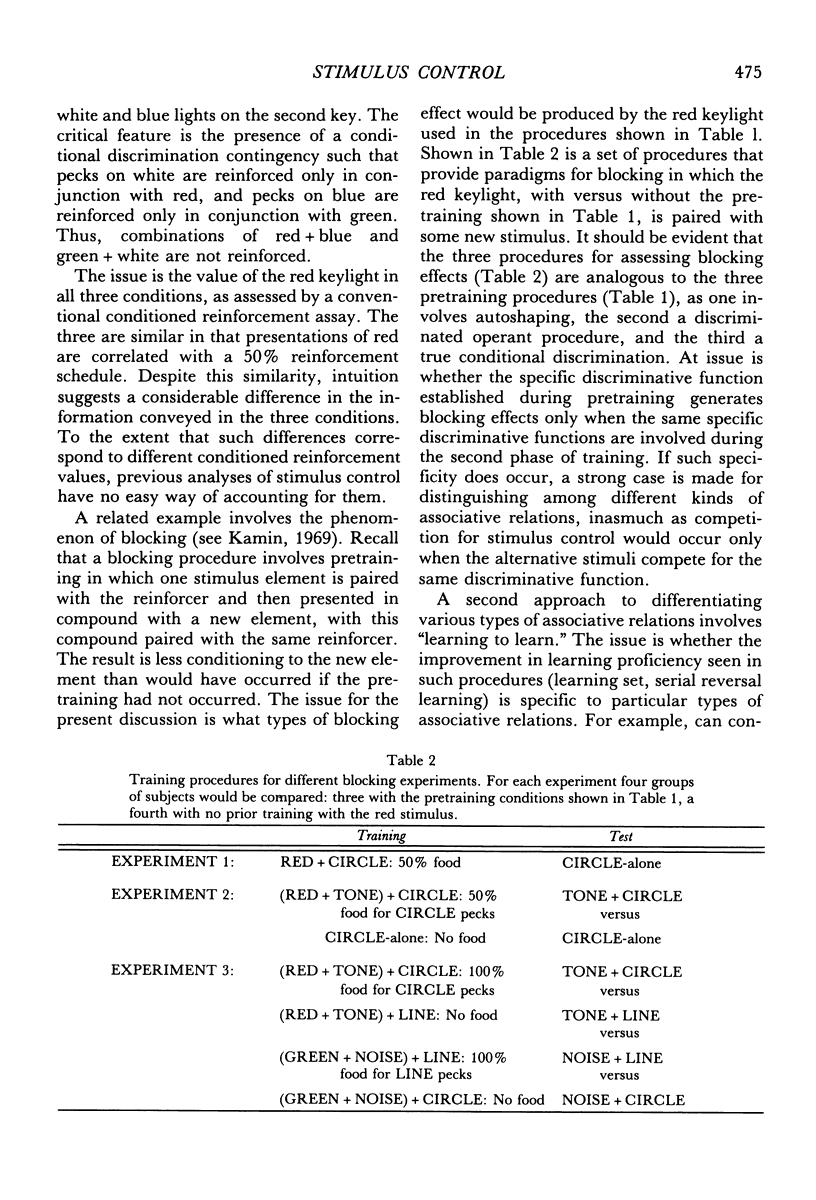
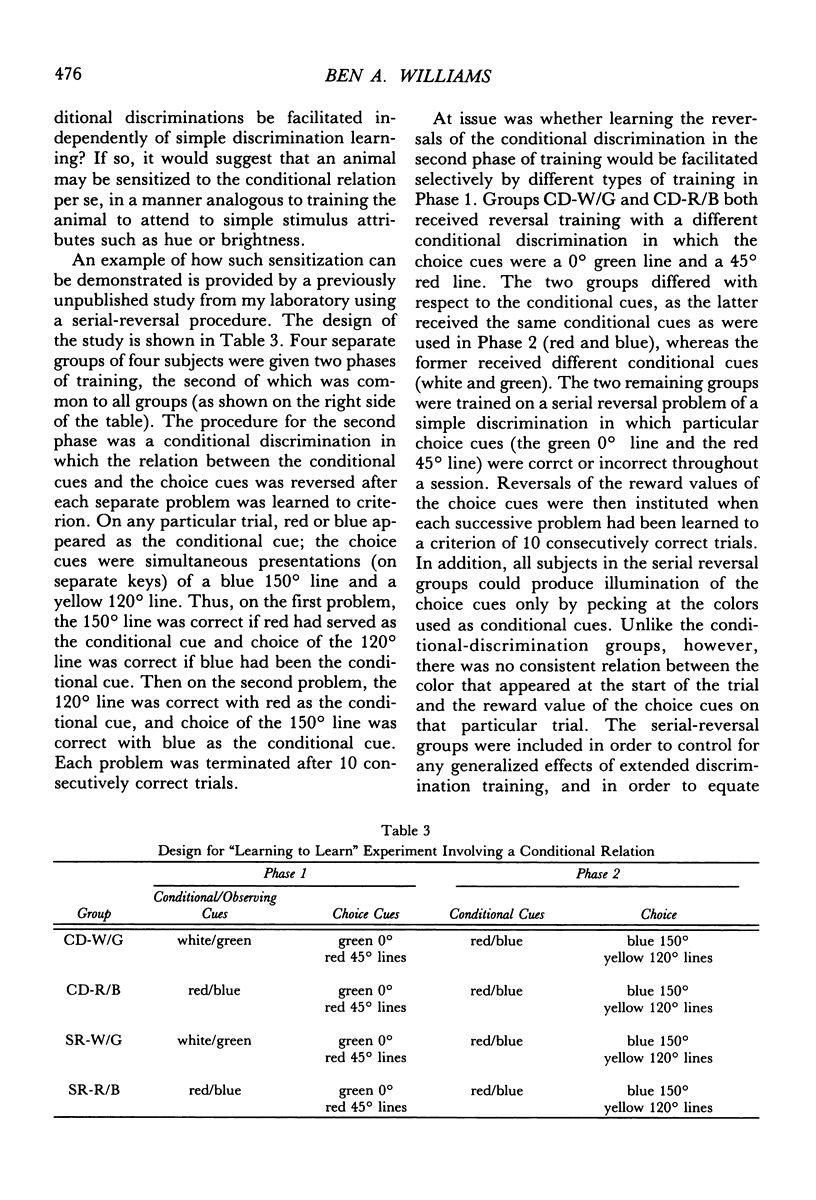
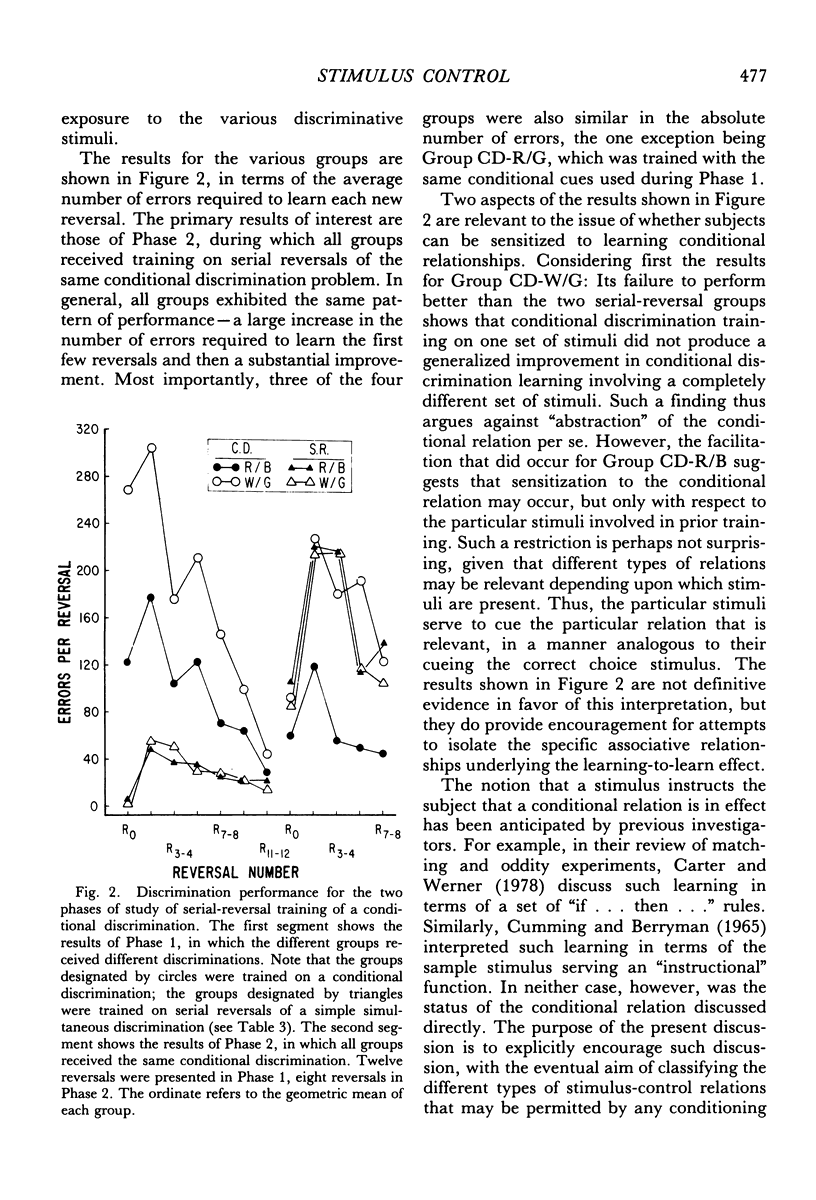
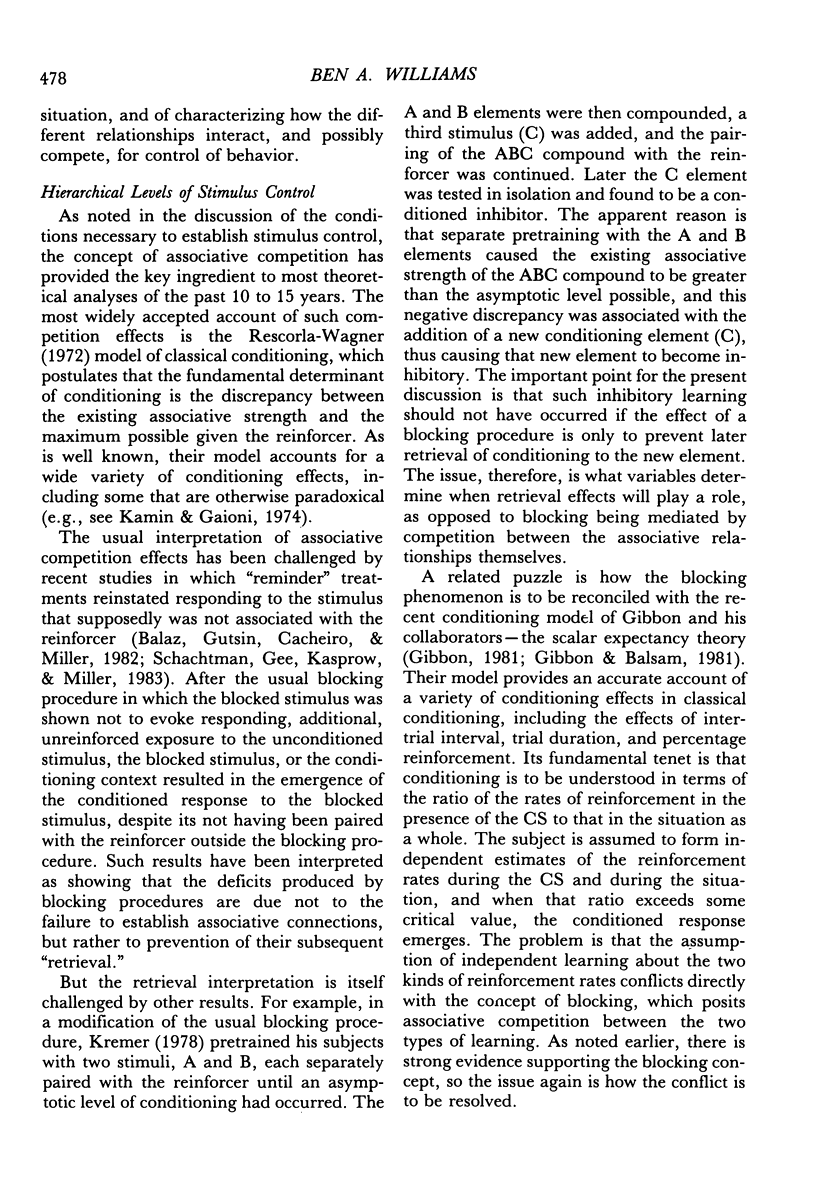
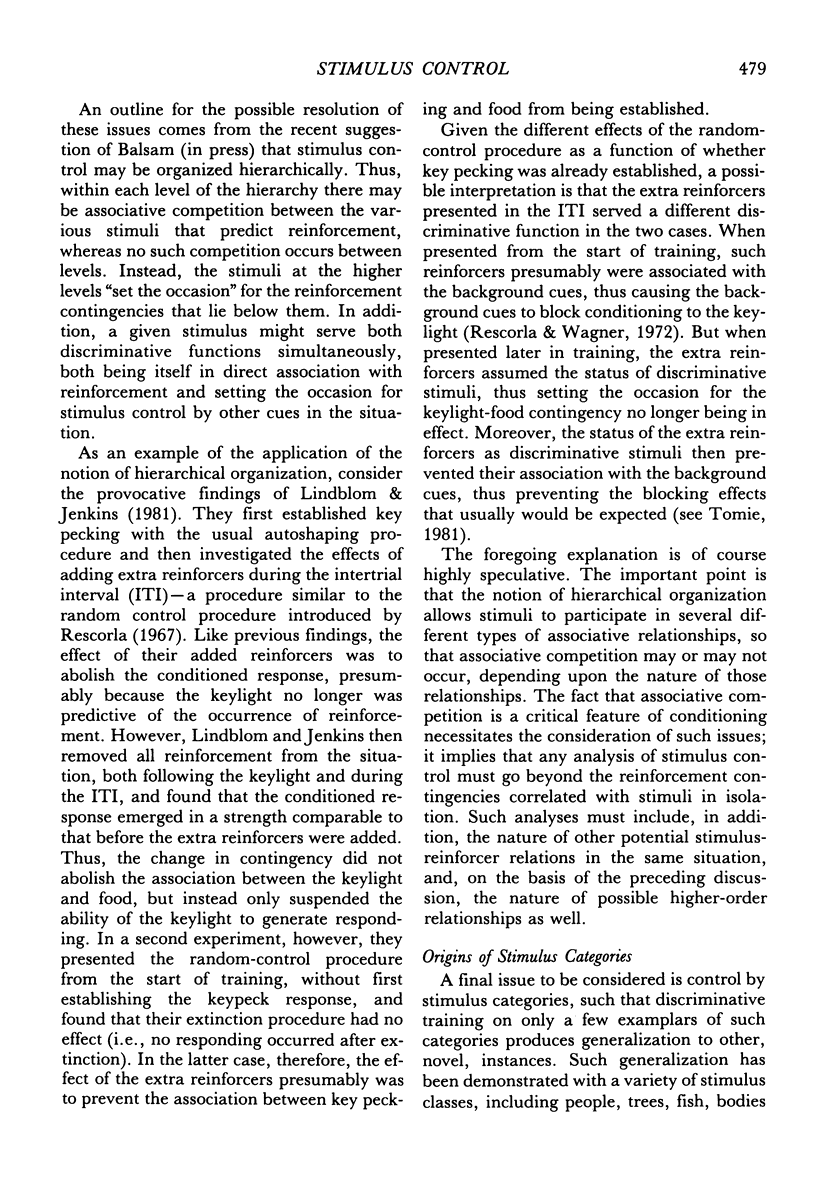
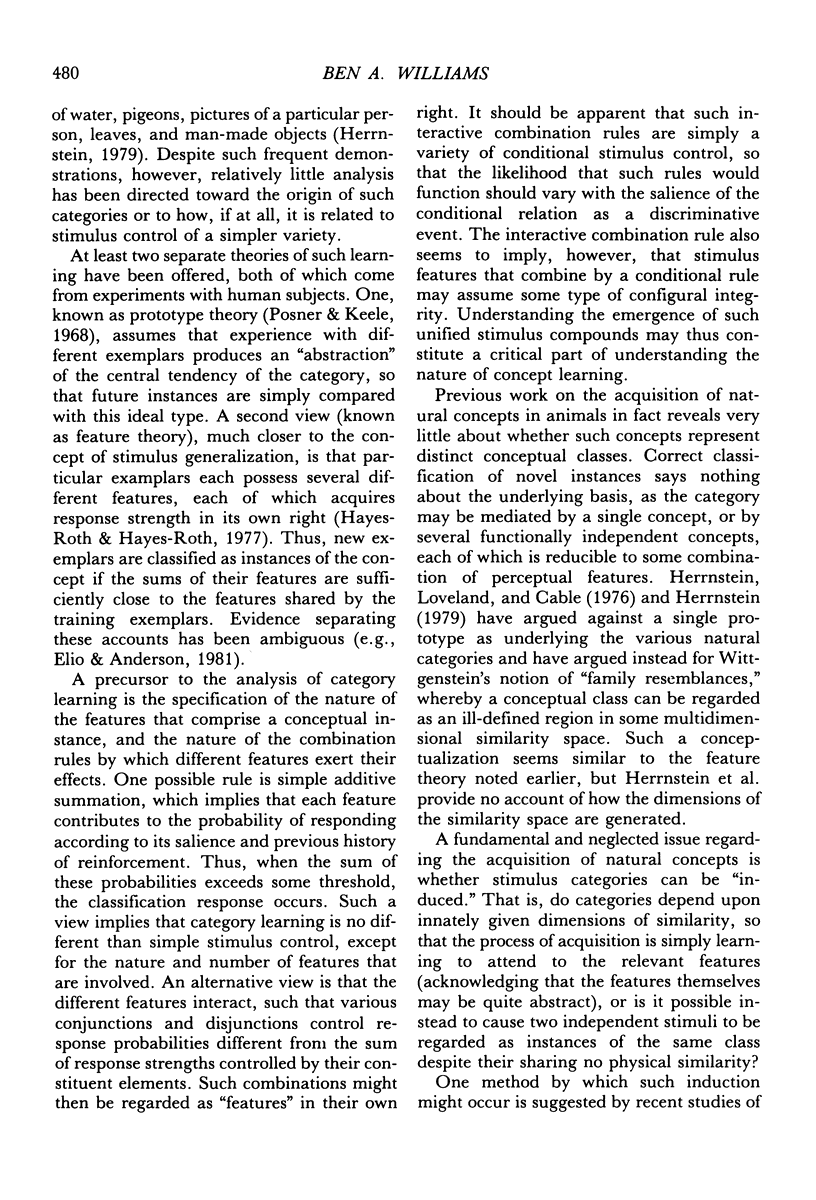
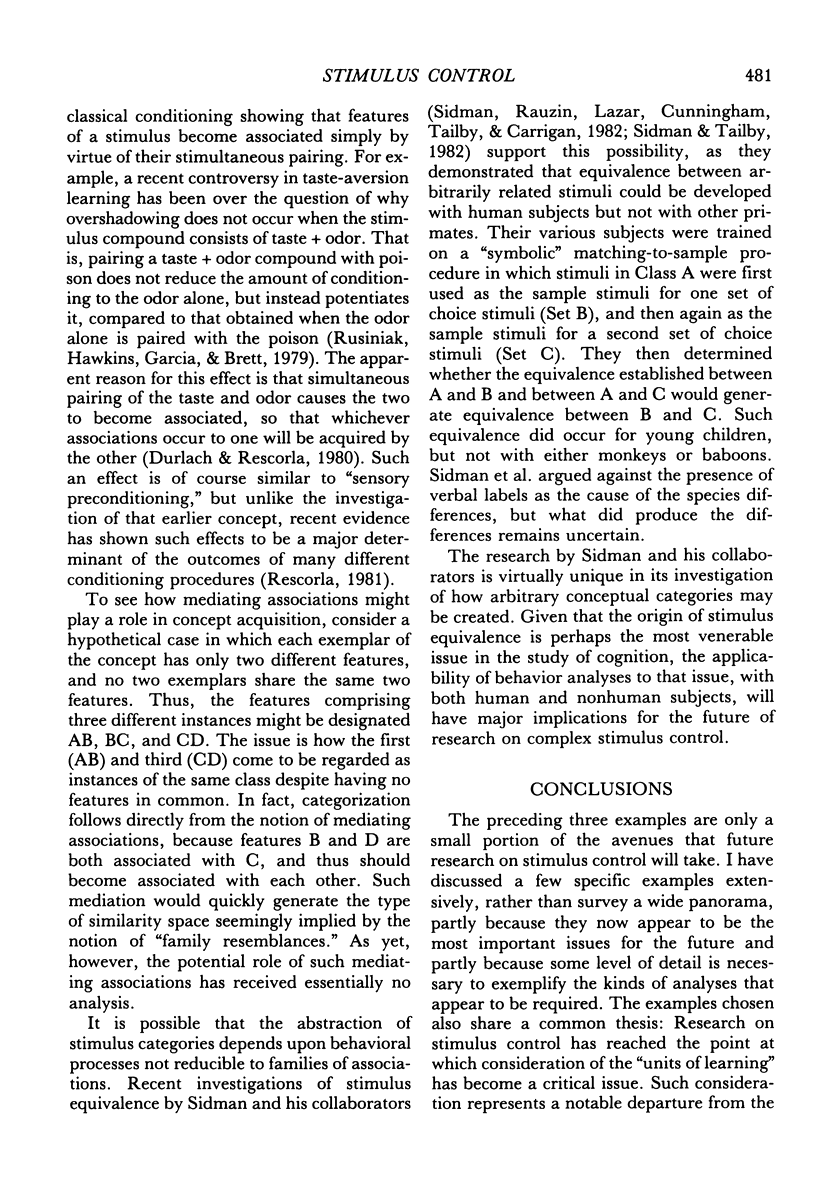
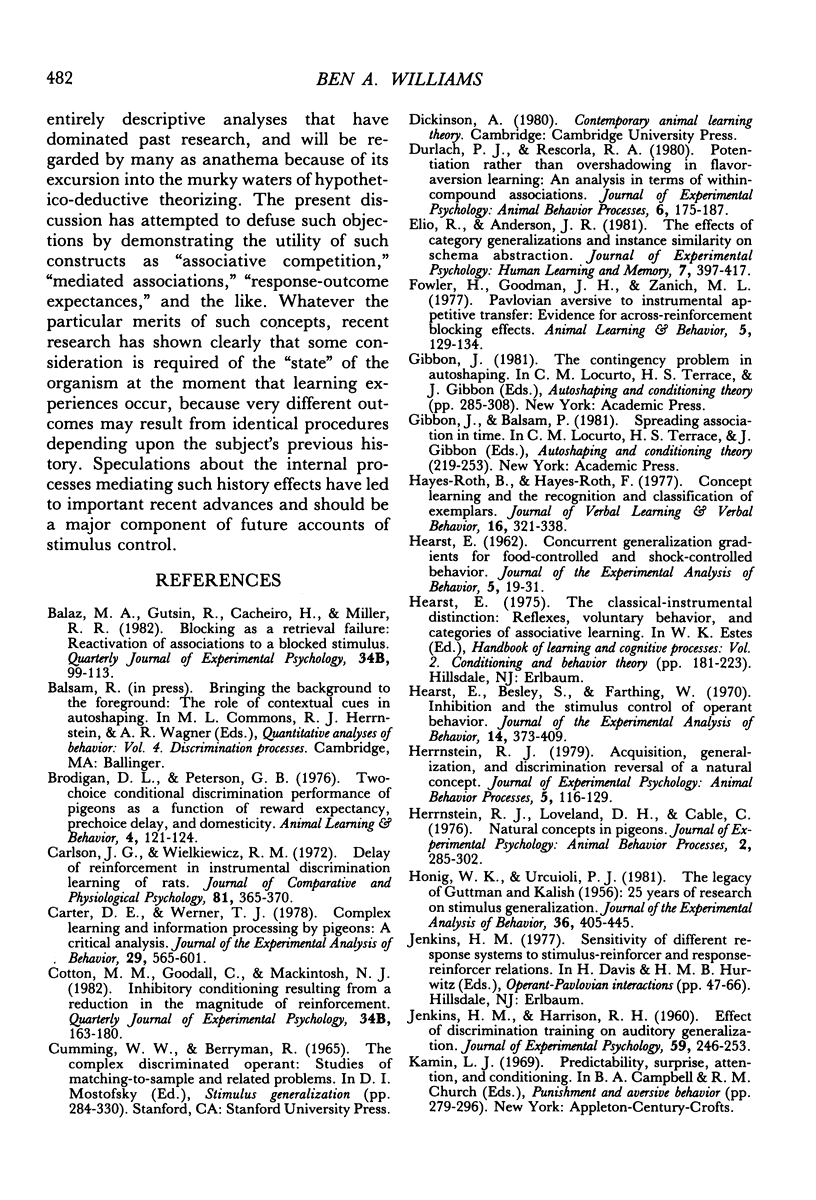
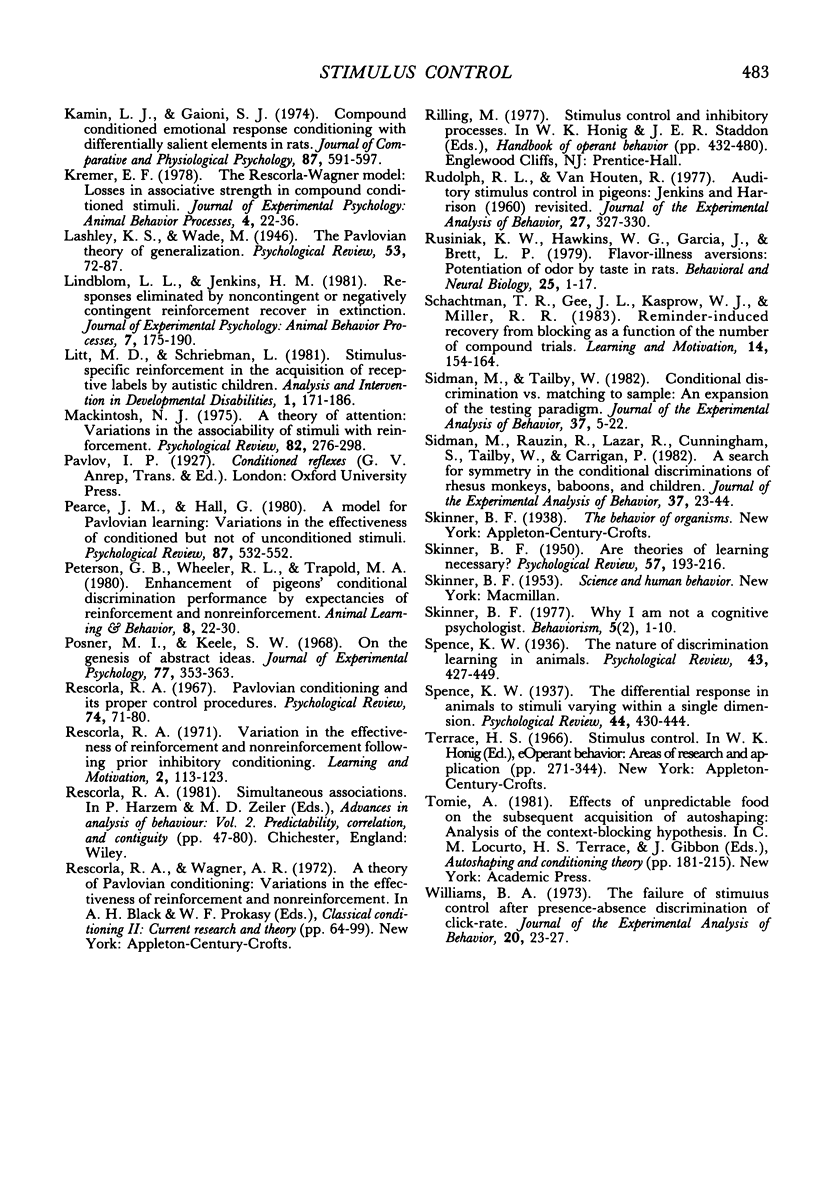
Selected References
These references are in PubMed. This may not be the complete list of references from this article.
- Balaz M. A., Gutsin P., Cacheiro H., Miller R. R. Blocking as a retrieval failure: reactivation of associations to a blocked stimulus. Q J Exp Psychol B. 1982 May;34(Pt 2):99–113. doi: 10.1080/14640748208400879. [DOI] [PubMed] [Google Scholar]
- Brodigan D. L., Peterson G. B. Two-choice conditional discrimination performance of pigeons as a function of reward expectancy, prechoice delay, and domesticity. Anim Learn Behav. 1976 May;4(2):121–124. doi: 10.3758/bf03214021. [DOI] [PubMed] [Google Scholar]
- Carlson J. G., Wielkiewicz R. M. Delay of reinforcement in instrumental discrimination learning of rats. J Comp Physiol Psychol. 1972 Nov;81(2):365–370. doi: 10.1037/h0033531. [DOI] [PubMed] [Google Scholar]
- Carter D. E., Werner T. J. Complex learning and information processing by pigeons: a critical analysis. J Exp Anal Behav. 1978 May;29(3):565–601. doi: 10.1901/jeab.1978.29-565. [DOI] [PMC free article] [PubMed] [Google Scholar]
- Cotton M. M., Goodall G., Mackintosh N. J. Inhibitory conditioning resulting from a reduction in the magnitude of reinforcement. Q J Exp Psychol B. 1982 Aug;34(Pt 3):163–180. doi: 10.1080/14640748208400884. [DOI] [PubMed] [Google Scholar]
- HEARST E. Concurrent generalization gradients for food-controlled and shock-controlled behavior. J Exp Anal Behav. 1962 Jan;5:19–31. doi: 10.1901/jeab.1962.5-19. [DOI] [PMC free article] [PubMed] [Google Scholar]
- Hearst E., Besley S., Farthing G. W. Inhibition and the stimulus control of operant behavior. J Exp Anal Behav. 1970 Nov;14(3 Pt 2 Suppl):373–409. doi: 10.1901/jeab.1970.14-s373. [DOI] [PMC free article] [PubMed] [Google Scholar]
- Hernstein R. J., Loveland D. H., Cable C. Natural concepts in pigeons. J Exp Psychol Anim Behav Process. 1976 Oct;2(4):285–302. doi: 10.1037//0097-7403.2.4.285. [DOI] [PubMed] [Google Scholar]
- Herrnstein R. J. Acquisition, generalization, and discrimination reversal of a natural concept. J Exp Psychol Anim Behav Process. 1979 Apr;5(2):116–129. doi: 10.1037//0097-7403.5.2.116. [DOI] [PubMed] [Google Scholar]
- Honig W. K., Urcuioli P. J. The legacy of Guttman and Kalish (1956): Twenty-five years of research on stimulus generalization. J Exp Anal Behav. 1981 Nov;36(3):405–445. doi: 10.1901/jeab.1981.36-405. [DOI] [PMC free article] [PubMed] [Google Scholar]
- JENKINS H. M., HARRISON R. H. Effect of discrimination training on auditory generalization. J Exp Psychol. 1960 Apr;59:246–253. doi: 10.1037/h0041661. [DOI] [PubMed] [Google Scholar]
- Kamin L. J., Gaioni S. J. Compound conditioned emotional response conditioning with differentially salient elements in rats. J Comp Physiol Psychol. 1974 Sep;87(3):591–597. doi: 10.1037/h0036989. [DOI] [PubMed] [Google Scholar]
- Kremer E. F. The Rescorla-Wagner model: losses in associative strength in compound conditioned stimuli. J Exp Psychol Anim Behav Process. 1978 Jan;4(1):22–36. doi: 10.1037//0097-7403.4.1.22. [DOI] [PubMed] [Google Scholar]
- Lindblom L. L., Jenkins H. M. Responses eliminated by noncontingent or negatively contingent reinforcement recover in extinction. J Exp Psychol Anim Behav Process. 1981 Apr;7(2):175–190. [PubMed] [Google Scholar]
- Pearce J. M., Hall G. A model for Pavlovian learning: variations in the effectiveness of conditioned but not of unconditioned stimuli. Psychol Rev. 1980 Nov;87(6):532–552. [PubMed] [Google Scholar]
- Posner M. I., Keele S. W. On the genesis of abstract ideas. J Exp Psychol. 1968 Jul;77(3):353–363. doi: 10.1037/h0025953. [DOI] [PubMed] [Google Scholar]
- Rescorla R. A. Pavlovian conditioning and its proper control procedures. Psychol Rev. 1967 Jan;74(1):71–80. doi: 10.1037/h0024109. [DOI] [PubMed] [Google Scholar]
- Rudolph R. L., Van Houten R. Auditory stimulus control in pigeons: Jenkins and Harrison (1960) revisited. J Exp Anal Behav. 1977 Mar;27(2):327–330. doi: 10.1901/jeab.1977.27-327. [DOI] [PMC free article] [PubMed] [Google Scholar]
- Rusiniak K. W., Hankins W. G., Garcia J., Brett L. P. Flavor-illness aversions: potentiation of odor by taste in rats. Behav Neural Biol. 1979 Jan;25(1):1–17. doi: 10.1016/s0163-1047(79)90688-5. [DOI] [PubMed] [Google Scholar]
- SKINNER B. F. Are theories of learning necessary? Psychol Rev. 1950 Jul;57(4):193–216. doi: 10.1037/h0054367. [DOI] [PubMed] [Google Scholar]
- Sidman M., Rauzin R., Lazar R., Cunningham S., Tailby W., Carrigan P. A search for symmetry in the conditional discriminations of rhesus monkeys, baboons, and children. J Exp Anal Behav. 1982 Jan;37(1):23–44. doi: 10.1901/jeab.1982.37-23. [DOI] [PMC free article] [PubMed] [Google Scholar]
- Sidman M., Tailby W. Conditional discrimination vs. matching to sample: an expansion of the testing paradigm. J Exp Anal Behav. 1982 Jan;37(1):5–22. doi: 10.1901/jeab.1982.37-5. [DOI] [PMC free article] [PubMed] [Google Scholar]
- Williams B. A. The failure of stimulus control after presence-absence discrimination of click-rate. J Exp Anal Behav. 1973 Jul;20(1):23–27. doi: 10.1901/jeab.1973.20-23. [DOI] [PMC free article] [PubMed] [Google Scholar]


